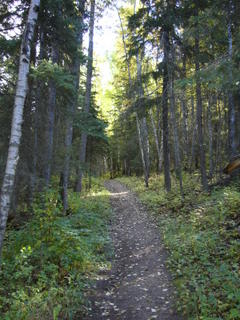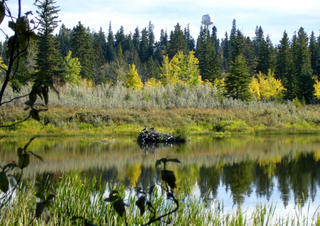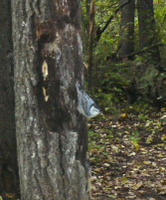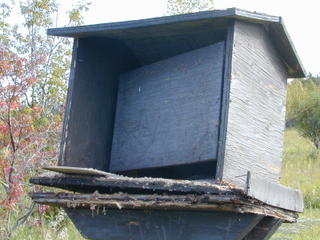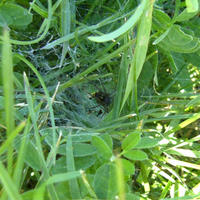Yes, there does appear to be a greater number of wasps (yellow jackets) around this year than in past years. They are easily identifiable by their bright yellow and black striped abdomen.
Here is a picture from the Royal Alberta Museum bug room.
Having received a sting on the lip this summer, I can assure you that it
will hurt. For most people who don't have an immediate serious reaction, a rapid application of ice to the sting site should take down swelling and pain.
When children get stung - as my fifteen month old did last night -
do not apply ice directly to fingertips or toes. Hold a cool, moist cloth on the sting site or put a toy in the bottom of a bowl of cool water and encourage the child to play with it. Ice on infant and toddler fingertips and toes can quickly lead to frostbite.
If you plan on being outside and want to limit your exposure to these insects, the best thing you can do is try to lure them away from you. My wasp lure is a mixture of stale beer, fruit punch and flat soda pop. Mix about a cup's worth and pour it into an empty 4 litre milk jug. Place the jug away from you. The wasps, attracted to the sweet mix, fly in and then due to the smooth walls and narrow top, cannot escape. Last weekend we counted 12 dead wasps in the jug in under two hours. I should point out that while they are annoying, yellow jackets do fill an ecological niche by scavenging dead insects and preying on other insects that people consider to be pests. Yes, even the nasty yellow jacket has a benefit to you. For this reason I'd strongly encourage you to use these lures on a limited basis and only when you are eating and drinking in problem areas.
Another interesting idea is to inflate a lunch-sized, paper bag and seal the top with string. Hang it
near you. Supposedly it resembles a nest well enough that the yellow jackets leave it alone.
I have not tried this and cannot attest to its effectiveness. If you want to try it out, drop us a line and let us know how it worked.

